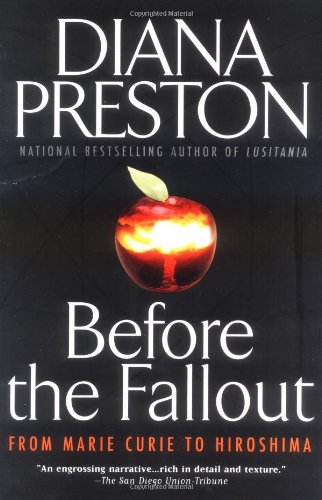
Before the Fallout
From Marie Curie to Hiroshima
کتاب های مرتبط
- اطلاعات
- نقد و بررسی
- دیدگاه کاربران
نقد و بررسی

Starred review from January 31, 2005
Nuclear weapons have been an immutable aspect of the world for the past 60 years. The story of how they came to be, and the race between the Allied and Axis nations to be the first to harness the destructive power of the atom, is wonderfully told by British historian Preston (A First Rate Tragedy
; Lusitania
; etc.). She weaves together history, physics, politics and military strategies to convey both the monumental scientific achievement the bomb represented and, at the same time, the ethical and humanitarian implications of creating such a wild power. Preston is an impeccable researcher with a gift for choosing small details that illuminate and humanize the bomb's world-changing effects. She quotes a doctor in Hiroshima saying the mass of burned flesh around him smelled like "dried squid when it is grilled—the squid we like so much to eat"; elsewhere, Preston relates that the potential explosive effect of a chain-reaction atomic bomb was first calculated on the back of a napkin. This is a story with a reservoir of events heroic and horrible and a fabulous cast of characters that includes scientists Einstein, Robert Oppenheimer, Edward Teller and Hans Bethe, and world leaders Roosevelt, Churchill, Truman, Stalin, Emperor Hirohito and Hitler. Preston presents each with rare insight and expertise. But her rarer achievement is to capture not only the work of making the bomb with its myriad ramifications for humankind, but also the ineffably human qualities—curiosity, ambition, fear, patriotism—that animated the participants in the great drama. 50 b&w illus. Agent, Michael Carlisle
.

March 1, 2005
The well-worn saga of the events, circumstances, and personalities that culminated in the detonation of the first atomic bomb has been recounted in several books; yet, the story remains compelling. Historian Preston ("A First Rate Tragedy: Robert Falcon Scott and the Race to the South Pole") offers an expansive account covering half a century, beginning with Marie and Pierre Curie's 1898 discovery of radium and continuing through other important scientific findings (e.g., Einstein's relativity theory and Heisenberg's quantum mechanics). She draws on numerous primary sources, including interviews with surviving scientists, to offer an insightful, engaging, and surprisingly fast-moving account, although there is little content that can be characterized as groundbreaking. The concluding chapter entertains several intriguing "what if" scenarios. While Preston's book captures the dynamic of an exuberant scientific community against the backdrop of world war, Richard Rhodes's masterful "The Making of the Atomic Bomb" remains the standard. -Gregg Sapp, Science Lib., SUNY at Albany
Copyright 2005 Library Journal, LLC Used with permission.

Starred review from March 1, 2005
Chronicles of the making of the atomic bomb never fail to arouse astonishment and horror, and there is still so much more to tell. Popular and gifted British historian Preston covers all facets of this complex, dramatic tale of revolutionary science, new extremes in tyranny and war, unprecedented global politics, and the gathering of a diverse group of scientists as eccentric as they were brilliant in a fast-paced and galvanizing narrative lustrous with heroics and shadowed with evil. Beginning with the unusual personalities and staggering discoveries of Marie Curie, Ernest Rutherford, and Albert Einstein, Preston not only profiles and puts in motion all the major players in this world-changing saga but also introduces intriguing lesser-known figures as she chronicles covert actions, including daring missions to sabotage Germany's atomic project. Both working on the quantum level, as it were, and drawing the big picture, Preston brings pre-apocalypse Hiroshima and Japan's atomic effort into crisp focus, as well as life at Los Alamos. Avidly researched and gracefully constructed, Preston's revelatory history is rich in telling moments, powerful personalities, intense confrontations, and indelible images of the devastation delivered by nuclear weapons, our Damoclean sword.(Reprinted with permission of Booklist, copyright 2005, American Library Association.)

























دیدگاه کاربران